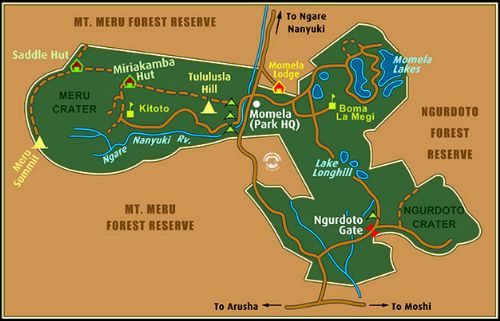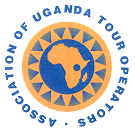Mount Meru Trekking (4 days)
Mount Meru is the smaller brother of Mount Kilimanjaro, reaching 4.565m (14,977ft).
This volcano is very scenic and during the trekking a lot of wildlife can be seen. Whole Mount Meru lies within Arusha National Park. To climb Mount Meru, you don’t need any mountain climbing skills, but you must be fit.
Porters will carry all your personal items, equipment and supplies and a cook prepares your meals.
We sleep in huts during the trekking. During the trekking you will be rewarded with fantastic scenic wonders and great panoramas. From early misty mornings to late afternoon sunsets. Mount Meru also gives you the best views of Mount Kilimanjaro.
It is possible to add one day for extra acclimatizing. During this day you will try to see the wildlife of Arusha National Park.
The extra day helps to get used to the high altitude.
Highlights
- Mount Meru
Video
Route
Day to day program
Kilimanjaro Airport - Arusha
Arrival at Kilimanjaro Airport, meet and greet by your guide, then make a transfer to Arusha Town (45 minute drive) to the hotel for an overnight. Briefing about the Mt. Meru climb by your guide. Your guide will also check your equipment. Anything missing can be rented the next day.
Arusha - Mt. Meru Park Gate - Miriakamba Hut
Drive from Arusha to the Mt. Meru Park Gate where you will be met by the crew who will help you during the Meru climb. We hike for the few hours to Miriakamba Hut on 2.590m (8,500ft). This is a good place to sleep the first night and to get used to the altitude. In the late afternoon you can make a walk on the slopes to view wildlife at one of the watering holes in the crater.
Miriakamba Hut - Saddle Hut
After breakfast we start hiking in this beautiful landscape on the slopes of Mt. Meru. We arrive at Saddle Hut on 3.500m (11,500ft). If time allows you can climb a little further on Mt. Meru for a scenic view of the 'Roof of Africa', the Kilimanjaro. This will help you to acclimatize well.
Saddle Hut - Summit - Miriakamba Hut
An early rise this morning to hike all the way to the summit before the afternoon clouds covers the summit. Enjoy breath taking views from the summit of Tanzania's second highest mountain, Mt. Meru, 4.565m (14,977ft). From the summit we descend back to the 3.500m (11,500ft) Saddle Hut in time for lunch. After lunch we hike down to Miriakamba Hut.
Miriakamba Hut – Arusha
Breakfast at the camp and a leisurely morning. We descend to the park gate. On our way we hope to see some wildlife. Down again we will celebrate our Mt. Meru adventure with our Guides, Cook and Porters. We all did a great job! Transfer to your hotel for your much-needed shower and very comfortable bed.
Accommodations
Legend: BB = Bed and Breakfast / FB = Full Board
Prices 2024
Price on request, please send an email to mail@kazingatours.com
Includes
- Airport and destination transfers
- Meals mentioned in your hotel
- All meals (breakfast, lunch and dinner) and drinks during the tracking
- Accommodations (hotel and huts during the trekking)
- Knowledgeable guide, assistant guide, porters, cook
- Rescue and entrance fees to the Arusha National Park
Excludes
- Flights
- Visa for Tanzania
- All optional activities
- Insurances
- Meals not mentioned and beverages
- Tips and personal expenses such as laundry and communication
- Gloves, Sun glasses, Sleeping bag, Hats, Rain suits, Warm Jacket, Heavy boots, Scarfs, Rain Trousers
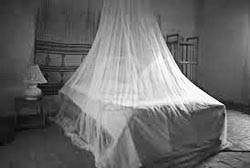 A certificate proving that you have received a yellow fever vaccination is obligatory. Furthermore all required inoculations must be recorded by your health practitioner on a valid vaccination certificate. You must carry this document with you throughout the tour. All visitors should take malaria prophylactic drugs. We also advise that you bring a mosquito repellent with you. Always consult your doctor or pharmacist for up to date requirements, inoculations and personal recommendations!
A certificate proving that you have received a yellow fever vaccination is obligatory. Furthermore all required inoculations must be recorded by your health practitioner on a valid vaccination certificate. You must carry this document with you throughout the tour. All visitors should take malaria prophylactic drugs. We also advise that you bring a mosquito repellent with you. Always consult your doctor or pharmacist for up to date requirements, inoculations and personal recommendations!
Normally you need the following vaccinations (but please always consult a doctor):
- Yellow Fever (you must have this can even be checked on arrival, especially when flying within East Africa)
- DTP
- Hepatitis
For Malaria you need to take tablets, Malarone or Lariam. Malarone is mostly used (please always consult a doctor).
Hygiene is not at the same standard as in your home country, so we advise you to bring a disinfectant cream with you. Always drink bottled water instead of tap water.
Good equipment is vital for an enjoyable trip. The following is a list of basic essentials:
- Sleeping Bag: A down or fiberfill sleeping bag rated at least "3 seasons", plus an insulation pad, such as "Karri mat", if camping.
- Footwear: Good, semi-stiff walking boots are suitable for most walks.
- Waterproof: A good waterproof jacket (with zip to assist ventilation) is essential. Waterproof trousers are optional.
- Rucksack: A 50-65 pack without a frame is preferable in Machame routes.
- Head Cover: A woolen hat or balaclava is invaluable.
- Trouser & Shirts: Wool breeches are ideal, corduroy acceptable. Trousers should be as windproof as possible. Long sleeved shirts, preferable wool, plus two thin jumpers are probably as much as is required for a short trip. A duvet jacket is luxury to have.
- Sun protection: A good sun cream, sun protection lip balm and sunglasses are essential.
Other useful equipment includes:
- Spare socks, shirt and trousers, mitts or gloves, torch, water bottle, small towel and wash kit, plastic bags, whistle and compass etc.
We can provide everything you need for your hike to the summit! We will check your equipment before the trekking and we will help you to get the right equipment when needed..
Ask use for a detailed list: kilimanjaro@kazingatours.com
On arrival on the airport our guide will be there waiting for you. During safari we use custom made safari vehicles, custom made for an optimal view of the wildlife. Safari vehicles (and small aircrafts) provide limited space for luggage. It is therefore recommended to travel with light bags since bulky suitcases will overload and might be difficult to be taken on board.
Visa - for those who require one - can be purchased in advance through the Tanzanian embassy or consulate in your home country. Visa can also be obtained upon arrival at Kilimanjaro / Dar es Salaam International Airport or at any overland border. The price for a single entry visa is USD 50 per person.
It is your own responsibility to arrange your visa(s) correctly and in time, but if anything is unclear of course we will be glad to assist you.
Note: This information is subject to change! Always consult the Tanzanian embassy in your country if you are not sure.
In most of the cities it is possible to withdraw money from an ATM. Travelers Cheques are not widely accepted and it is very difficult or impossible to pay by credit card outside the cities. The US dollar is traditionally the hard currency of preference. We advise to bring some Dollars for daily expenses and tips.
Dollar bills should not be older than 10 years.
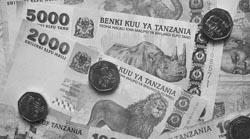
The unit of currency is the Tanzanian Shilling. Please check the latest exchange rates before you go to your destination. This will be a guideline. Please note you will get a better exchange rate in the bigger cities.
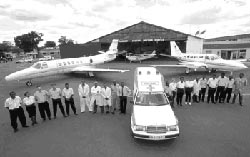
We advise you to apply for a Flying Doctors membership. The membership provides a quick and reliable air evacuation and medical care if needed.
AMREF Flying Doctors offers 2 covers (Annual and Short Term). You can choose between the Maisha Silver (Kenya, Tanzania and Zanzibar), Maisha Gold (Kenya, Tanzania, Zanzibar, Uganda, Rwanda and Burundi) or Maisha Platinum (Kenya, Tanzania, Zanzibar, Uganda, Rwanda, Burundi, South Sudan and Ethiopia).
Please check out the AMREF Flying Doctors website for more information and to become a member.
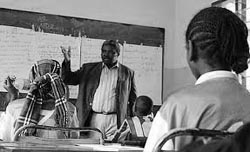 The national language of Tanzania is Kiswahili but English is widely spoken and is the main language in the tourist areas.
The national language of Tanzania is Kiswahili but English is widely spoken and is the main language in the tourist areas.
Tanzania is a tropical country, with high temperatures along the coast and at lower altitudes (especially in the Southern Part). The Northern part is at higher altitudes (except for Lake Natron and Tarangire).
Areas around the Ngorongoro Crater, Mt. Kilimanjaro, Mt. Meru and Arusha are generally cooler.
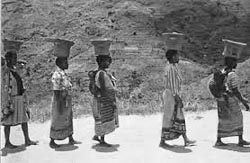
Daytime temperatures are generally warm to hot, so bring lots of light clothing. Evenings are cooler, especially at higher altitudes, so carry a couple of light sweaters too.
Those who intend to do mountain hiking will be exposed to alpine temperatures and should pack accordingly.
Don’t forget to bring a hat, sunglasses and a waterproof jacket. During safaris we advise to avoid black and dark blue clothes (because they can attract tsetse flies). For hiking and walking safaris Solid walking shoes and sturdy clothing are ideal for forest walks.
If you are planning on doing a community walk or visit the local people, we advise you to wear appropriate clothing. For example women putting on long skirts and a top that covers the shoulders.
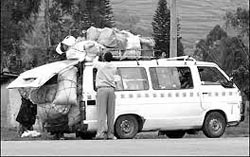 A valid passport is mandatory (passport must be valid for at least 3 months after re-entry) and visa requirements for all countries you are planning to visit should be checked before you travel.
A valid passport is mandatory (passport must be valid for at least 3 months after re-entry) and visa requirements for all countries you are planning to visit should be checked before you travel.
To make the most of your visit to the game reserves and national parks, we advise you to carry binoculars and field guides.
Photographers will need a zoom lens for wildlife (70-300 or more). Please make sure to carry enough memory cards with you. Toiletries and other essentials can be bought in the cities.
A torch (flashlight) can proof to be very useful
We advise you to take an international adapter with you for your electric equipment. The system used in Tanzania is the British system. In most lodges it is possible to charge your batteries.
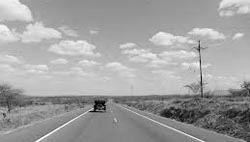 Driving in Tanzania is on the left-hand side.
Driving in Tanzania is on the left-hand side.
Visitors without experience of African roads are advised to travel with a 4x4 vehicle driven by a knowledgeable driver/guide, rather than self-drive.
All our guides are well trained in "Defensive Driving".
Please mind that washrooms along the road are sometimes not to European standards, for example squatting toilets, no flushing toilets or no toilet paper available. Like the locals say: T.I.A. This Is Africa.
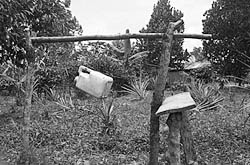 Bathroom facilities and accommodations can be more basic when traveling on a medium to low budget. In the eco lodges mind that the water reserves are limited and in most cases there are no sockets in the room, but you can always charge your devices at the reception.
Bathroom facilities and accommodations can be more basic when traveling on a medium to low budget. In the eco lodges mind that the water reserves are limited and in most cases there are no sockets in the room, but you can always charge your devices at the reception.
 Tipping will always be appreciated. It is normal to tip 5-10% in hotels and restaurants. Guides, drivers and carriers should always be tipped. Indication: for carriers USD 1-3 and for your driver/guide USD 5-15 per day, depending on the group size, number of days and your satisfaction.
Tipping will always be appreciated. It is normal to tip 5-10% in hotels and restaurants. Guides, drivers and carriers should always be tipped. Indication: for carriers USD 1-3 and for your driver/guide USD 5-15 per day, depending on the group size, number of days and your satisfaction.
The Lonely Planet and Bradt Travel Guide are the most detailed guidebooks for Tanzania. For wildlife, the best guidebook is ‘Watching Wildlife East Africa’ from the Lonely Planet and The Bradt ‘East African Wildlife’. For birding, the best guidebook is ‘birds of East Africa’. It is advisable to get the most updated copy.

